3.3
Experiment Library
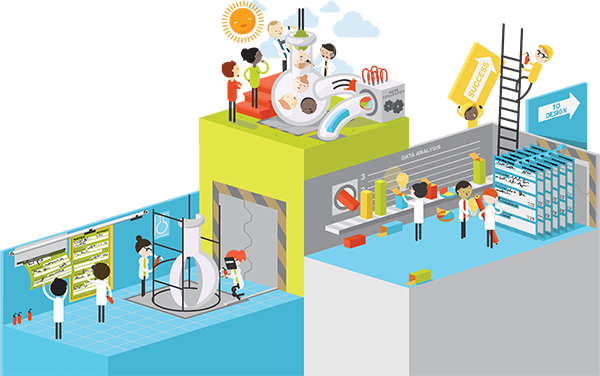
Choose a Mix of Experiments
Every experiment has strengths and weaknesses. Some are quick and cheap but produce less reliable evidence. Some produce more reliable evidence but require more time and money to execute.
Consider cost, data reliability, and time required when you design your mix of experiments. As a rule of thumb, start cheap when uncertainty is high and increase your spending on experiments with increasing certainty.
Select a series of tests by drawing from our experiment library or by using your imagination to invent new experiments. Keep two things in mind when you compose your mix:
What customers say and do are two different things.
Use experiments that provide verbal evidence from customers as a starting point. Get customers to perform actions and engage them (e.g., interact with a prototype) to produce stronger evidence based on what they do, not what they say.
Customers behave differently when you are there or when you are not.
During direct personal contact with customers, you can learn why they do or say something and get their input on how to improve your value proposition. However, your presence might lead them to behave differently than if you weren’t there.
In an indirect observation of customers (on the web, for example) you are closer to a real-life situation that isn’t biased by your interaction with customers. You can collect numerical data and track how many customers performed an action you induced.
![]()
Produce Evidence with a Call to Action
Use experiments to test if customers are interested, what preferences they have, and if they are willing to pay for what you have to offer. Get them to perform a call to action (CTA) as much as possible in order to engage them and produce evidence of what works and what doesn’t.

The more a customer (test subject) has to invest to perform a CTA, the stronger the evidence that he or she is really interested. Clicking a button, answering a survey, providing a personal e-mail, or making a prepurchase are different levels of investments. Select your experiments accordingly.
CTAs with a low level of investment are appropriate at the beginning of value proposition design. Those requiring a high level of investment make more sense later in the process.
![]()
Ad Tracking
Use ad tracking to explore your potential customers’ jobs, pains, gains, and interest—or lack of it—for a new value proposition. Ad tracking is an established technique used by advertisers to measure the effectiveness of ad spending. You can use the same technique to explore customer interest even before a value proposition exists.
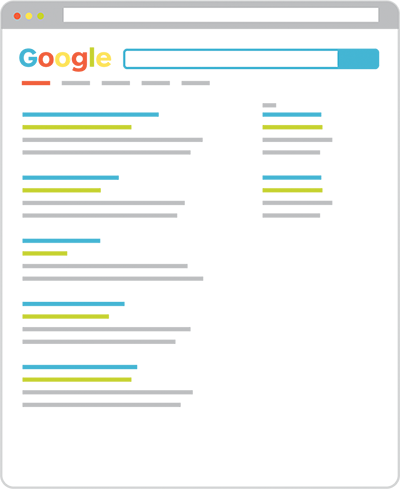
Test customer interest with Google AdWords
We use Google AdWords to illustrate this technique because it’s particularly well suited for testing based on its use of search terms for advertising (other services such as LinkedIn and Facebook also work well).
- Select search terms.
Select search terms that best represent what you want to test (e.g., the existence of a customer job, pain, or gain or the interest for a value proposition). - Design your ad/test.
Design your test ad with a headline, link to a landing page, and blurb. Make sure it represents what you want to test. - Launch your campaign.
Define a budget for your ad/testing campaign and launch it. Pay only for clicks on your ad, which represent interest. - Measure clicks.
Learn how many people click on your ad. No clicks may indicate a lack of interest.
Where to apply?
Test interest early in the process to learn about the existence of customer jobs, pains, gains, and interest for a particular value proposition.
![]()
Unique Link Tracking
Set up unique link tracking to verify potential customers’ or partners’ interest beyond what they might tell you in a meeting, interview, or call. It’s an extremely simple way to measure genuine interest.
1
“Fabricate” a unique link.
Make a unique and trackable link to more detailed information about your ideas (e.g., a download, landing page) with a service such as goo.gl.

2
Pitch and track.
Explain your idea to a potential customer or partner. During or after the meeting (via e-mail), give the person the unique link and mention it points to more detailed information.
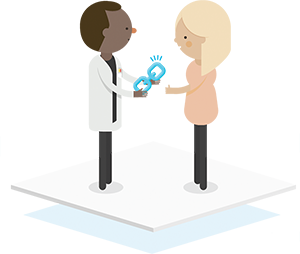
3
Learn about genuine interest.
Track if the customer used the link or not. If the link wasn’t used, it may indicate lack of interest or more important jobs, pains, and gains than those that your idea addresses.
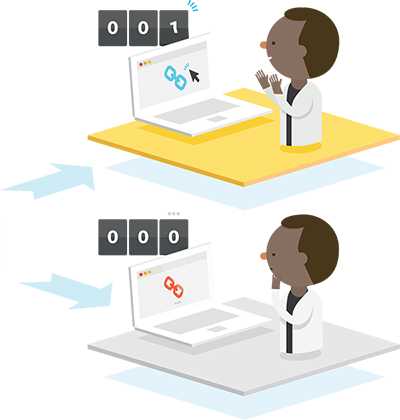
Where to apply?
This works anywhere but is particularly interesting in industries where building MVPs is difficult, such as in industrial goods and medical devices.
![]()
MVP Catalog
MVP stands for minimum viable product, a concept popularized by the lean start-up movement to efficiently test the interest in a product before building it entirely. Rather than coining a new term we stick to this established one and adapt it to testing value propositions.
Make it “real” with a representation of a value proposition.
Use the following techniques to make your value propositions feel real and tangible before implementing anything when you test them with potential customers and partners.

Data Sheet
Specs of your imagined value proposition
Requirements: Word processor

Brochure
Mocked-up brochure of your imagined value proposition Requirements: Word processor and design skills
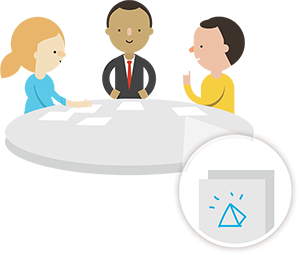
Storyboard
Illustration of a customer scenario showcasing your imagined value proposition
Requirements: Sketch artist
What’s an MVP in this book?
A representation or prototype of a value proposition designed specifically to test the validity of one or more hypotheses/assumptions.
The goal is to do so as quickly, cheaply, and efficiently as possible. MVPs are mainly used to explore potential customer and partner interest.
Tip
Start cheaply, even in large companies with big budgets. For example, use your smartphone to make and test reactions to a video before you bring in a video crew to “professionalize” videos and expand testing.

Landing Page
Website outlining your imagined value proposition (mostly with a CTA).
Requirements: Web designer
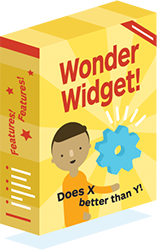
Product Box
Prototype packaging of your imagined value proposition
Requirements: Packaging designer and prototype implementation

Video
Video showcasing your imagined value proposition or explaining how it works
Requirements: Video crew
Learn with Functional MVPs
Use prototypes designed specifically to learn from experiments with potential customers and partners.
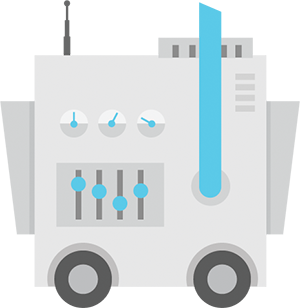
Learning Prototype
Functioning prototype of your value proposition with the most basic feature set required for learning
Requirements: Product development

Wizard of Oz
Set up a front that looks like a real working value proposition and manually carry out the tasks of a normally automated product or service
Requirements: Getting your hands dirty
![]()
Illustrations, Storyboards, and Scenarios
Share illustrations, storyboards, and scenarios related to your value proposition ideas with your potential customers to learn what really matters to them. These types of Illustrations are quick and cheap to produce and make even the most complex value propositions tangible.
Tips
- In a business-to-business (B2B) context think of value propositions for each important customer segment, such as users, budget owners, decision makers, and so on.
- For existing organizations, make sure to include customer-facing staff in the process, notably to get buy-in and gain access to customers to present the illustrations.
- Complement the illustrations with mock data sheets, brochures, or videos to make your ideas even more tangible.
- Run A/B tests with slightly different scenarios to capture which variations get most traction.
- Four or five meetings per customer segment are typically sufficient to generate meaningful feedback.
- Leverage the customer relationship and repeat the process later on with more sophisticated prototypes.
Process adapted from Christian Doll, bicdo.de.
1
Prototype alternative value propositions.
Come up with several alternative prototypes for the same customer segment. Go for diversity (i.e., 8-12 radically different value propositions) and variations (i.e., slightly different alternatives).
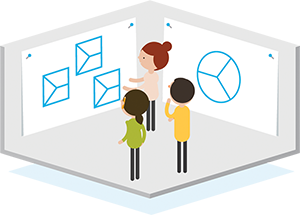
2
Define scenarios.
Sketch out scenarios and storyboards that describe how a customer will experience each value proposition in a real-world setting.
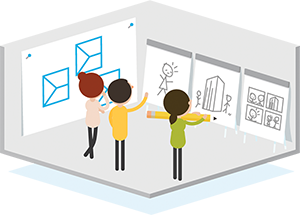
3
Create compelling visuals.
Use an illustrator to consolidate your sketches into compelling visuals that make the customer experience clear and tangible. Use single illustrations for each value proposition or entire story boards.
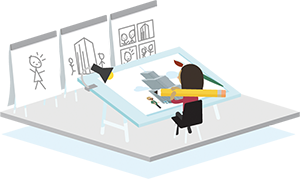
Questions to ask customers:
Which value propositions really create value for you?
Which ones should we keep and move forward with, and which ones should we abandon?
Dig deeper for each value proposition; pay attention to jobs, pains, and gains; and inquire:
- What is missing?
- What should be left aside?
- What should be added?
- What should be reduced?
- Always ask why to capture qualitative feedback.
4
Test with customers.
Meet customers and present the different illustrations, scenarios, and storyboards to start a conversation, provoke reactions, and learn what matters to them. Get customers to rank value propositions from most valuable to least helpful.
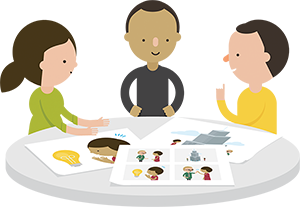
5
Debrief and adapt.
Use the insights from your meetings with customers. Decide which value propositions you will continue exploring, which ones you will abandon, and which ones you will adapt.
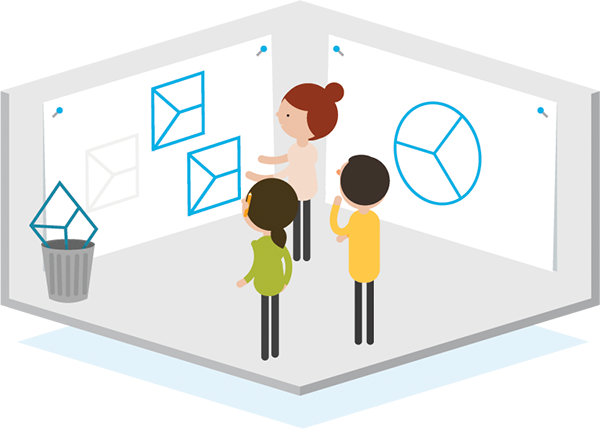
![]()
Life-Size Experiments
Get your customers to interact with life-size prototypes and real-world replicas of service experiences. Stick to the principles of rapid, quick, and low-cost prototyping to gather customer insights despite the more sophisticated set-up. Add a CTA to validate interest.
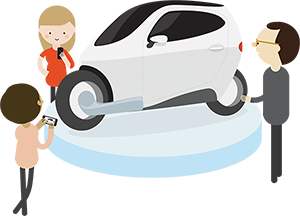
Concept Cars and Life-Size Prototypes
These are cars made to showcase new designs and technologies. Their purpose is get reactions from customers rather than to go into mass production directly.
Lit Motors used lean start-up principles to prototype and test a fully electric, gyroscopically stabilized two-wheel drive with customers. Because this type of vehicle represents a completely new concept, it was essential for Lit Motors to understand customer perception and acceptance from the very beginning.
In addition, Lit Motors added a CTA to validate customer interest beyond initial interactions with the prototype. Customers can prereserve a vehicle with a deposit ranging from $250 to $10,000. Deposits go into a holding account until vehicles are ready, with higher deposits moving customers to the front of the waiting list.

Prototype Spaces
These are spaces to cocreate products and service experiences with customers and/or observe their behavior to gain new insights. Invite potential customers to create their own perfect experience. Include industry experts to help build and test new concepts and ideas.
Hotel chain Marriott built a prototyping space in its headquarters’ basement called the Underground. Guests and experts are invited to create the hotel experience of the future by cocreating hotel rooms and other spaces. Guests are invited to add furniture, electricity outlets, electronic gadgets, and more, to hotel room replicas that can easily be reconfigured.
Tips
- Make sure you validate life-size prototypes and service experiences with a CTA. Customers will always be tempted to create the perfect experience in a prototype setting, whereas they might not be willing to pay for it in real life.
- Use quicker and cheaper validation methods before you draw on life-size prototypes and real-world replicas of service experiences.
- Don’t let the costs for this type of prototyping get out of hand. Stick to the principles of rapid, quick, and low-cost prototyping as much as possible, while offering a close-to-life experience to test subjects.
![]()
Landing Page
The typical landing page MVP is a single web page or simple website that describes a value proposition or some aspects of it. The website visitor is invited to perform a CTA that allows the tester to validate one or more hypotheses. The main learning instrument of a landing page MVP is the conversion rate from the number of people visiting the site to visitors performing the CTA (e.g., e-mail sign-up, simulated purchase).
“The goal of a landing page MVP is to validate one or more hypotheses, not to collect e-mails or sell, which is a nice by-product of the experiment.”
When?
Test early to learn if the jobs, pains, and gains you intend to address and/or your value proposition are sufficiently important to your customer for them to perform an action.
Variations
Combine with split testing to investigate preferences or alternatives that work better than others. Measure click activity with so-called heat maps to learn where visitors click on your page.
Use your value map to craft the headline and text that describes your value proposition on the landing page.
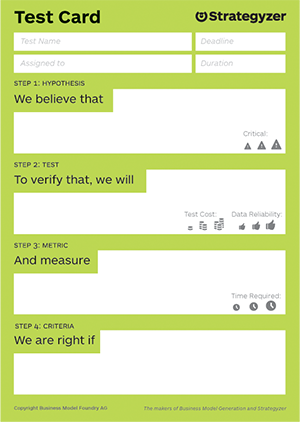
Design your landing page, traffic generation, and CTA based on your learning goals.

Traffic
Generate traffic to your landing page MVP with ads, social media, or your existing channels. Make sure you address the target customers you want to learn about, not just anybody.
Headline
Craft a headline that speaks to your potential customers and introduces the value proposition.
Value Proposition
Use the previously described techniques to make your value proposition clear and tangible to potential customers.
Call to Action
Get website visitors to perform an action that you can learn from (e.g., e-mail sign-up, surveys, fake purchase, prepurchase). Limit your CTAs to optimize learning.
Outreach
Reach out to people who performed your CTA and investigate why they were motivated enough to perform the action. Learn about their jobs, pains, and gains. Of course, this requires collecting contact information during the CTA.
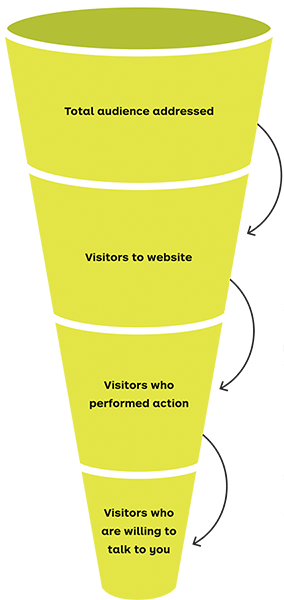

What percentage of people were interested enough to visit your page?

What percentage of people were interested to perform the action?

What percentage of people were willing to invest time to talk to you?
Tips
- Consider building a landing page MVP that gives the illusion that a value proposition exists even if doesn’t yet. Your insights from a CTA closer to reality (e.g., simulated sales) will provide more realistic evidence than, for example, the e-mail sign-up to a planned value proposition or a prepurchase of it.
- Be transparent with your test subjects after a concluded experiment if you, for instance, “fake” the existence of a value proposition. Consider offering them a reward for participating in the experiment.
- A landing page MVP can be set up as a standalone web page or within an existing website.
![]()
Split Testing
Split testing, also known as A/B testing, is a technique to compare the performance of two or more options. In this book we apply the technique to compare the performance of alternative value propositions with customers or to learn more about jobs, pains, and gains.

Control 8%
Send the same amount of people to the diff erent options you want to test.

Challenge 20%
Compare how each option performs regarding your CTA.
Conducting Split Tests
The most common form of split test is to test two or more variations of a web page or a purpose-built landing page (e.g., the variations may have design tweaks or outline slightly or entirely different value propositions). This technique was popularized by companies such as Google and LinkedIn, as well as the 2008 Obama campaign. Split tests can also be conducted in the physical world. The main learning instrument is to compare if conversion rates regarding a specific call to action differ between competing alternatives.
What to Test?
Here are some elements that you can easily test with A/B testing
- Alternative features
- Pricing
- Discounts
- Copy text
- Packaging
- Website variations
- . . .
Call to Action
How many of the test subjects perform the CTA?
- Purchase
- E-mail sign-up
- Click on button
- Survey
- Completion of any other task
Split testing the title of this book
For this book we performed several split tests. For example, we redirected traffic from businessmodelgeneration.com to test three different book titles. We tested the titles with more than 120,000 people over a period of 5 weeks.
There were several CTAs. The first one was to simply click on a button labeled “learn more.” Then people could sign up with their e-mail for the launch of the book. In the last CTA, we asked them to fill out a survey to learn more about their jobs, pains, and gains. As a small reward we showed people a video explaining the Value Proposition Canvas.
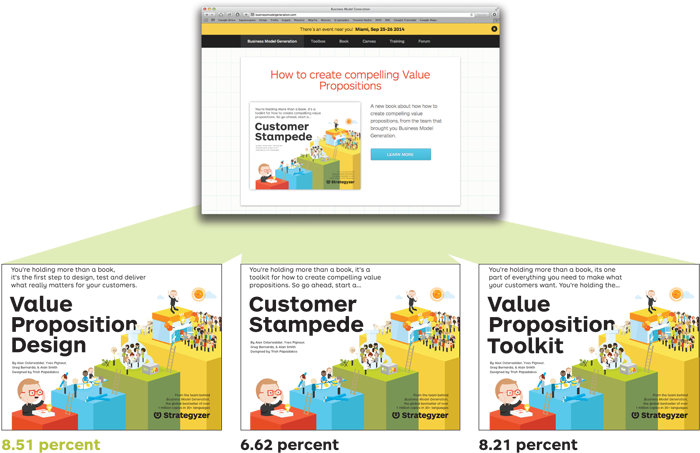
Tips
- Test a single variation in the challenging option if you want to clearly identify what leads to a better performance.
- Use so-called multivariate testing to test several combined elements to figure out which combination creates the highest impact.
- Use Google AdWords or other options to attract test subjects.
- Make sure you reach a statistical significance of greater than 95 percent
- Use tools such as Google Website Optimizer, Optimizely, or others to easily perform split tests.
![]()
Innovation Games®
Innovation Games is a methodology popularized by Luke Hohmann to help you design better value propositions by using collaborative play with your (potential) customers. The games can be played online or in person. We present three of them.
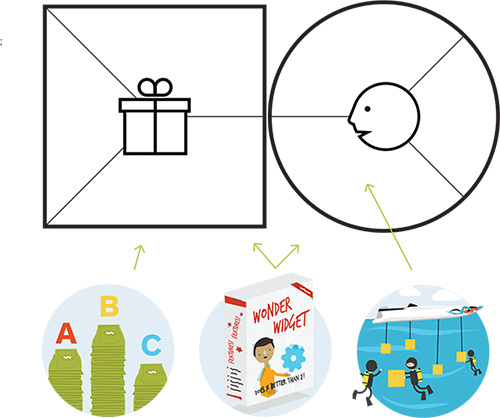
All three Innovation Games we present can be used in various ways. We outline three specific tasks they can help us with when it comes to the Value Proposition Canvas and related hypotheses.

Buy a feature
Task: Prioritize which features customers want most.

Product Box
Task: Understand your customers’ jobs, pains, and gains and the value propositions they’d like.
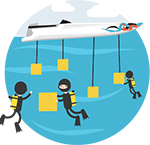
Speed Boat
Task: Identify the most extreme pains holding customers back from completing their jobs to be done.
Hohmann, Innovation Games, 2006.
![]()
Speed Boat
This is a simple but powerful game to help you verify your understanding of customer pains. Get your customers to explicitly state the problems, obstacles, and risks that are holding them back from successfully performing their jobs to be done by using the analogy of a speed boat held back by anchors.
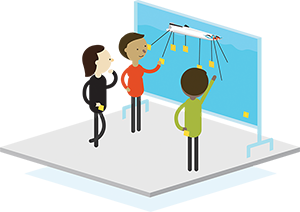
1
Set-up.
Prepare a large poster with a speedboat floating at sea.
2
Identify pains.
Invite customers to identify the problems, obstacles, and risks that are preventing them from successfully performing their jobs. Each issue should go on a large sticky note. Ask them to place each sticky as anchors to the boat—the lower the anchor, the more extreme the pain.
3
Analysis.
Compare the outcomes of this exercise with your previous understanding of what is holding customers back from performing their jobs to be done.
Tips
- This exercise can be used during the design phase to identify customer pains or during testing to verify your existing understanding.
- Use a sailing boat with anchors and sails if you want to work on pains and gains simultaneously. The sails allow you to ask, “What makes the boat faster,” in addition to using the anchors to symbolize what holds people back.
![]()
Product Box
In this game, you ask customers to design a product box that represents the value proposition they’d want to buy from you. You’ll learn what matters to customers and which features they get excited about.
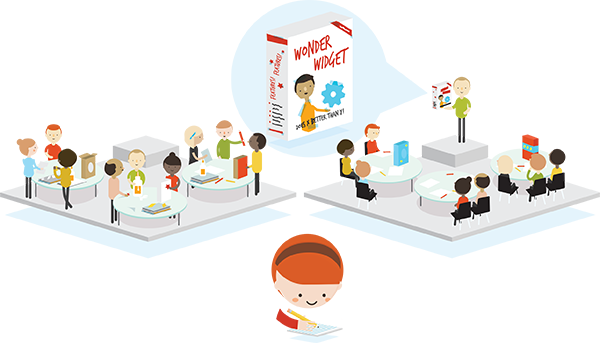
1
Design.
Invite customers to a workshop. Give them a cardboard box and ask them to literally design a product box that they would buy. The box should feature the key marketing messages, main features, and key benefits that they would expect from your value proposition.
2
Pitch.
Ask your customers to imagine they’re selling your product at a tradeshow. Pretend you’re a skeptical prospect and get your customer to pitch the box to you.
3
Capture.
Observe and note which messages, features, and benefits customers mention on the box and which particular aspects they highlight during the pitch. Identify their jobs, pains, and gains.
![]()
Buy a Feature
This is a sophisticated game to get customers to prioritize among a list of predefined (but not yet existing) value proposition features. Customers get a limited budget of play money to buy their preferred features, which you price based on real-world factors.

1
Select and price features.
Select the features for which you want to test customer preferences. Price each one based on development cost, market price, or other factors that are important to you.
2
Define the budget.
Participants buy features as a group, but each participant gets a personal budget that he or she can allocate individually. Make sure the personal budget forces participants to pool resources, and the overall budget forces them to make hard choices among the features they want.
3
Have the participants buy.
Invite participants to allocate their budget among the features they want. Instruct them to collaborate with others to get more features.
4
Analyze outcomes.
Analyze which features get most traction and are bought and which ones are not.
![]()
Mock Sales
A great way to test sincere customer interest is to set up a mock sale before your value proposition even exists. The goal is make your customers believe they are completing a real purchase. This is easily done in an online context but can also be done in a physical one.
Online
Test different levels of customer commitment with these three experiments:
Learn about customer interest by measuring how many people click on a simple “buy now” button.

Learn how pricing influences customer interest. Combine with A/B testing (see p. 230) to learn more about demand elasticity and the optimal price point.

Get hard data by simulating a transaction with the customer’s credit card information. This is the strongest evidence of customer demand (see tips to manage customer perception, p. 237).
Physical World
Mock sales are not limited to online. Here’s what retailers do to test customer interest and pricing in the real world:


Introduce products that don’t exist yet in a limited number of (mail order) catalogs.

Sell a product in one retail location only for a limited amount of time (different from a pilot, which typically covers an entire market).
Tips
Don’t fear that mock sales might alienate customers and negatively affect your brand. Manage customer perception well, and mock sales can be turned into an advantage. Build on these best practices:
- Explain that you were performing a test after the customer completes the mock purchase.
- Be transparent about which information you keep or erase.
- Always erase credit card information in a fake purchase.
- Offer a reward for participating in the test (e.g. goodies, discounts).
You will turn test subjects into advocates for your brand rather than alienate them if you manage customer perception well.
Attention
Remember that successful presales are only an indicator. Ouya, an Android-based video game console, raised millions on Kickstarter but later failed to attract a large base of customers or design a scalable business model.
![]()
Presales
The main objective of this type of presales is to explore customer interest; it is not to sell. Customers make a purchase commitment and are aware of the fact that your value proposition does not yet fully exist. In case of a lack of interest, the sale is canceled and the customer reimbursed.
Online
Platforms such as Kickstarter made preselling popular. They allow you to advertise a project, and if customers like it, they can pledge money. Projects receive funds only if they reach their predefined funding goals. If you are up for building the required infrastructure you can also set up your own presales process.
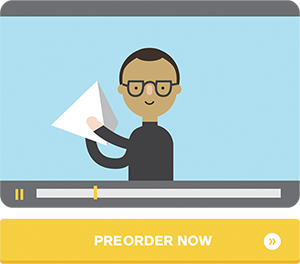
Physical World
Pledges, letters of intent, and signatures, even if not legally binding, are a powerful technique to test potential customers’ willingness to buy. This is also easier to apply in a B2B context.
